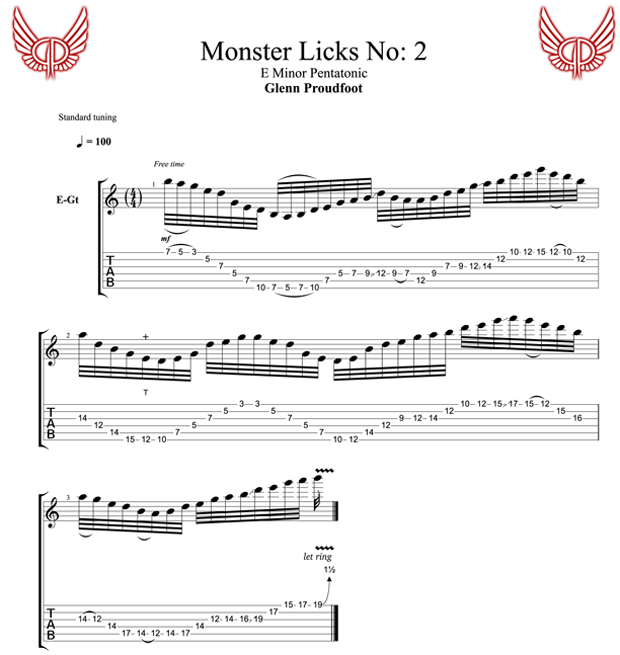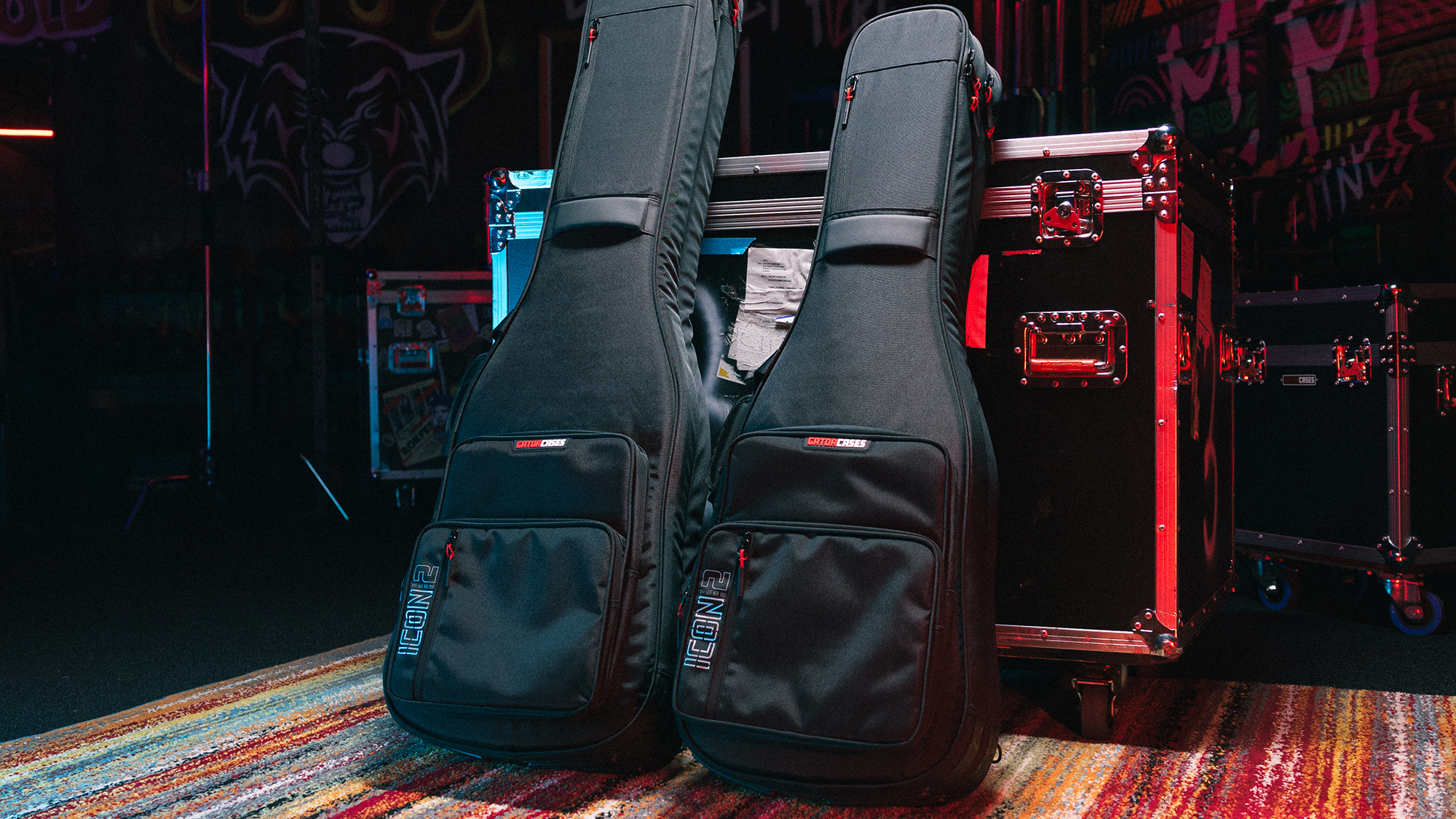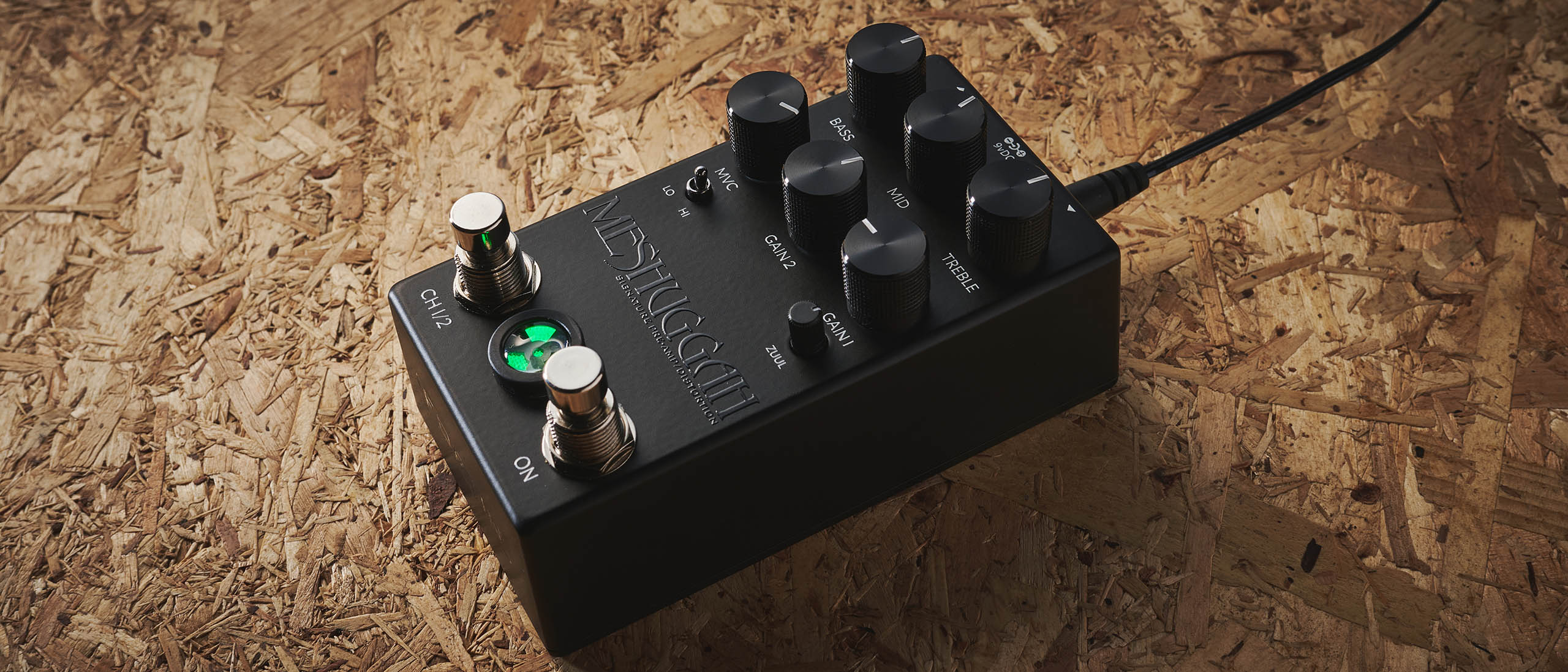Monster Licks: Breaking the Boundaries of the Minor Pentatonic Scale

In this week's Monster Licks, I am — once again — pushing the boundaries of the minor pentatonic scale.
The harmonic qualities of this scale really resonate with me. I know this may sound strange because this lick is played at high speed, but for me, the scale never looses its melodic beauty, no matter how fast or slow it’s played.
This is a really important thing to discover for all guitar players and musicians: Find out what sound moves you! My love started with the blues guitar greats. As I progressed as a player, so did my thirst for knowledge. But in my search for new players, techniques and challenges, I always wanted to remain in the tonal core that moved me, and that is the blues-rooted pentatonic sound.
Here is the lick (broken into sections).
Section 1
I start this lick with a legato line on the high E string, moving into a six-string arpeggio, then back into another legato line, this time on the low E. With this arpeggio, I am hitting only one note per string. It is very important to make sure your picking hand and fretting hand are perfectly in sync, so practice slowly and work up a nice even flow before playing quick.
Section 2
Get The Pick Newsletter
All the latest guitar news, interviews, lessons, reviews, deals and more, direct to your inbox!
This is a series of three-string arpeggios with legato. I use this pattern a lot when creating runs in my solos and improvisation. My goal with this is to create a really free-flowing, smooth-sounding transition between the different boxes of the pentatonic. I suggest trilling one of these shapes before attempting the whole run.
Section 3
This section starts with a six-string arpeggio. This sets up the “over the top” lick where I swing my hand over the fretboard and play two six-string arpeggios. The most important elements to this part are the note I pivot from, or the notes I fret with my left thumb. This enables me to create a smooth transition while I'm switching between techniques. Remember, this is not an important thing to be able to do on the guitar, but it should be looked at as a challenge! Just have some fun with the idea!
Section 4
This section is a series of three-string arpeggios. Take notice of how the pattern is formed. I play the arpeggio, then a three-note line at the end of every arpeggio, the last note of the three being the beginning of the next arpeggio. It sounds a little confusing, but if you follow the transcript along with this description, it will make perfect sense!
Also, focus on the hammers and pulls. They are essential in mastering this sound.
Make sure you experiment with all of these ideas. It's not important to be able to play this lick at my speed; nor is it important to be able to play it at all. What IS important is that you constantly challenge yourself!
I hope you enjoy! Please join me on YouTube right here! Or just contact me at glennproudfoot.com.

Australia's Glenn Proudfoot has played and toured with major signed bands and artists in Europe and Australia, including progressive rockers Prazsky Vyber. Glenn released his first instrumental solo album, Lick Em, in 2010. It is available on iTunes and at glennproudfoot.com.
She wowed Sonny Landreth and Carlos Santana called her the “future” – Erja Lyytinen shares her 6 go-to slide licks for unlocking more expressive soloing
“He combined the passion of Gary Moore with riffs inspired by Zeppelin and Deep Purple, plus unexpected melodic twists like Ritchie Blackmore”: He was one of ’80s rock’s great journeymen – and his searing hot lead work inspired Marty Friedman










